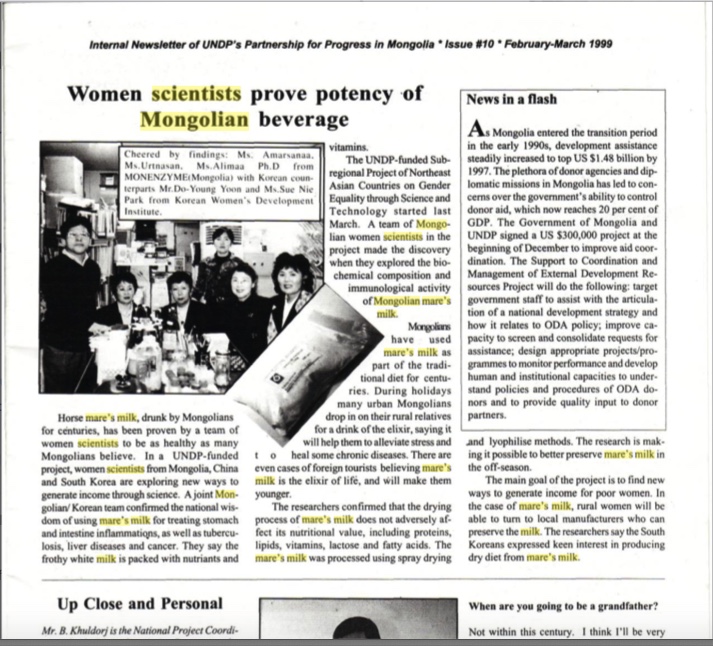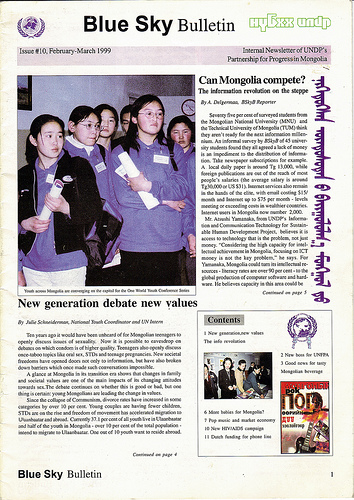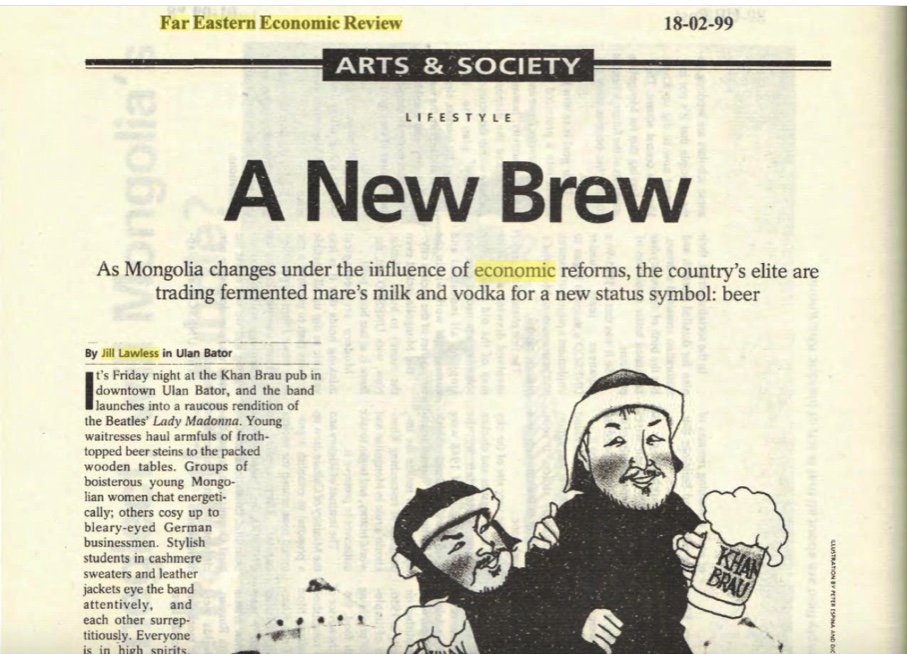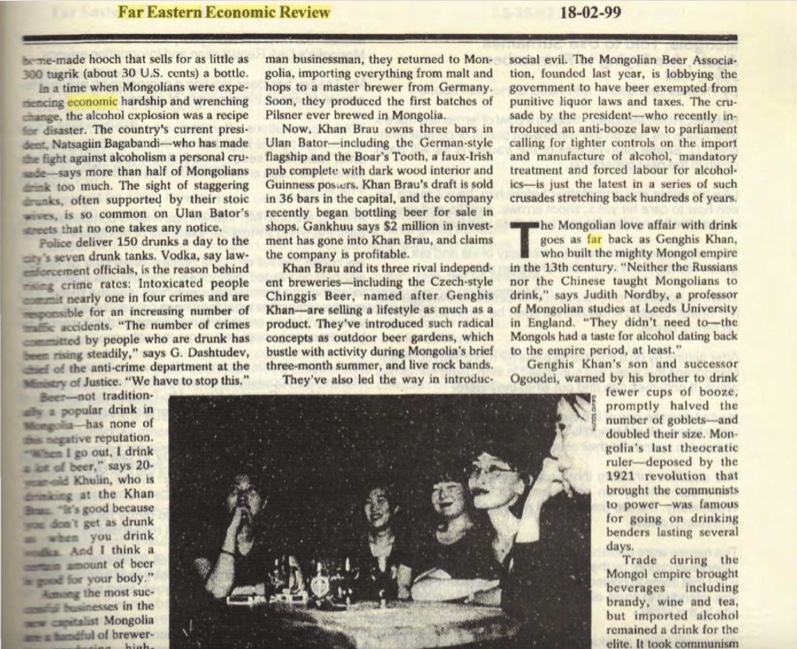Women scientists prove potency of Mongolian beverage | February-March 1999
 Wednesday, December 23, 2020 at 11:26AM
Wednesday, December 23, 2020 at 11:26AM By David South, Blue Sky Bulletin (Ulaanbaatar, Mongolia), Issue 10, February-March 1999
Horse mare’s milk, drunk by Mongolians for centuries, has been proven by a team of women scientists to be as healthy as many Mongolians believe. In a UNDP-funded project, women scientists from Mongolia, China and South Korea are exploring new ways to generate income through science. A joint Mongolian/Korean team confirmed the national wisdom of using mare’s milk for treating stomach and intestine inflammations, as well as tuberculosis, liver diseases and cancer. They say the frothy white milk is packed with nutrients and vitamins.
The UNDP-funded Subregional Project of Northeast Asian Countries on Gender Equality through Science and Technology started last March. A team of Mongolian women scientists in the project made the discovery when they explored the bio-chemical composition and immunological activity of Mongolian mare’s milk.
Mongolians have used mare’s milk as part of the traditional diet for centuries. During holidays many urban Mongolians drop in on their rural relatives for a drink of the elixir, saying it will help them to alleviate stress and to heal some chronic diseases. There are even cases of foreign tourists believing mare’s milk is the elixir of life, and will make them younger.
The researchers confirmed that the drying process of mare’s milk does not adversely affect its nutritional value, including proteins, lipids, vitamins, lactose and fatty acids. The mare’s milk was processed using spray drying and lyophilise methods. The research is making it possible to better preserve mare’s milk in the off-season.
The main goal of the project is to find new ways to generate income for poor women. In the case of mare’s milk, rural women will be able to turn to local manufacturers who can preserve the milk. The researchers say the South Koreans expressed keen interest in producing dry diet from mare’s milk.
Another beverage was catching the interest of Mongolians in the late 1990s: beer.
From The Far Eastern Economic Review, February 18, 1999
Story by Jill Lawless
Photo by David South
ORCID iD: https://orcid.org/0000-0001-5311-1052.
© David South Consulting 2020
 1999,
1999,  Blue Sky Bulletin,
Blue Sky Bulletin,  Issue 10,
Issue 10,  Mongolia,
Mongolia,  Ulaanbaatar,
Ulaanbaatar,  diet,
diet,  health,
health,  innovation,
innovation,  innovators,
innovators,  nutrition,
nutrition,  scientists,
scientists,  technology in
technology in  Agenda 2030,
Agenda 2030,  Agenda 21,
Agenda 21,  Austerity,
Austerity,  Blue Sky Bulletin,
Blue Sky Bulletin,  Cities,
Cities,  David South Consulting,
David South Consulting,  Environment,
Environment,  Health,
Health,  Magazine Stories 1990s,
Magazine Stories 1990s,  Northeast Asia,
Northeast Asia,  Poor,
Poor,  Shock Therapy,
Shock Therapy,  Solutions,
Solutions,  South-South Cooperation,
South-South Cooperation,  Sustainable Development,
Sustainable Development,  Trade,
Trade,  UN Innovator Stories,
UN Innovator Stories,  UNDP,
UNDP,  UNDP Innovator Stories,
UNDP Innovator Stories,  UNDP Mongolia,
UNDP Mongolia,  United Nations,
United Nations,  United Nations Mission,
United Nations Mission,  Women
Women 




